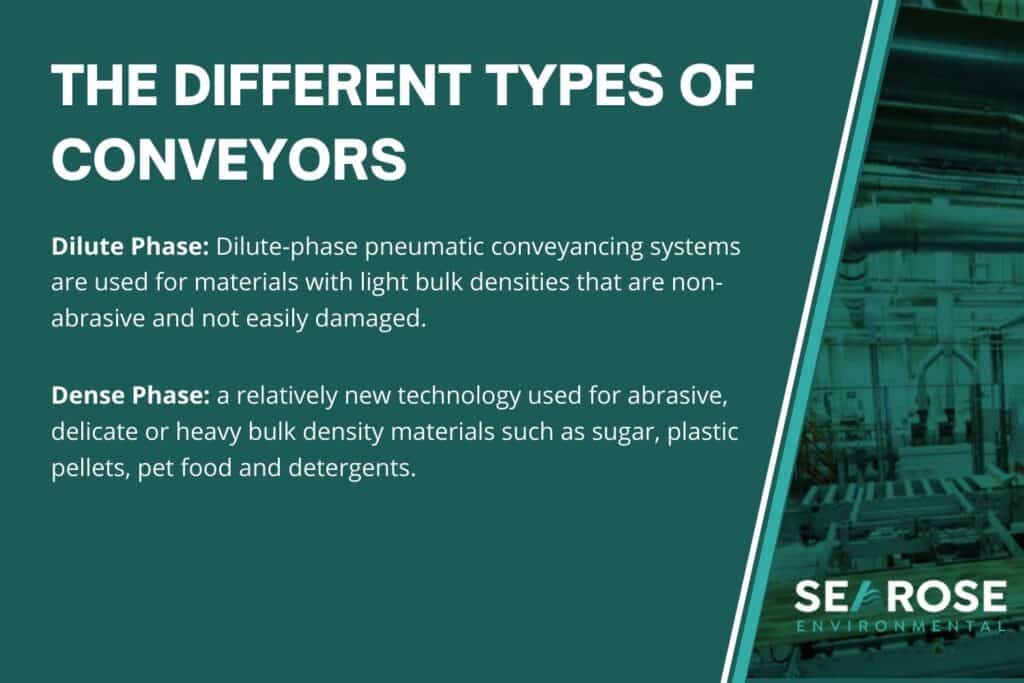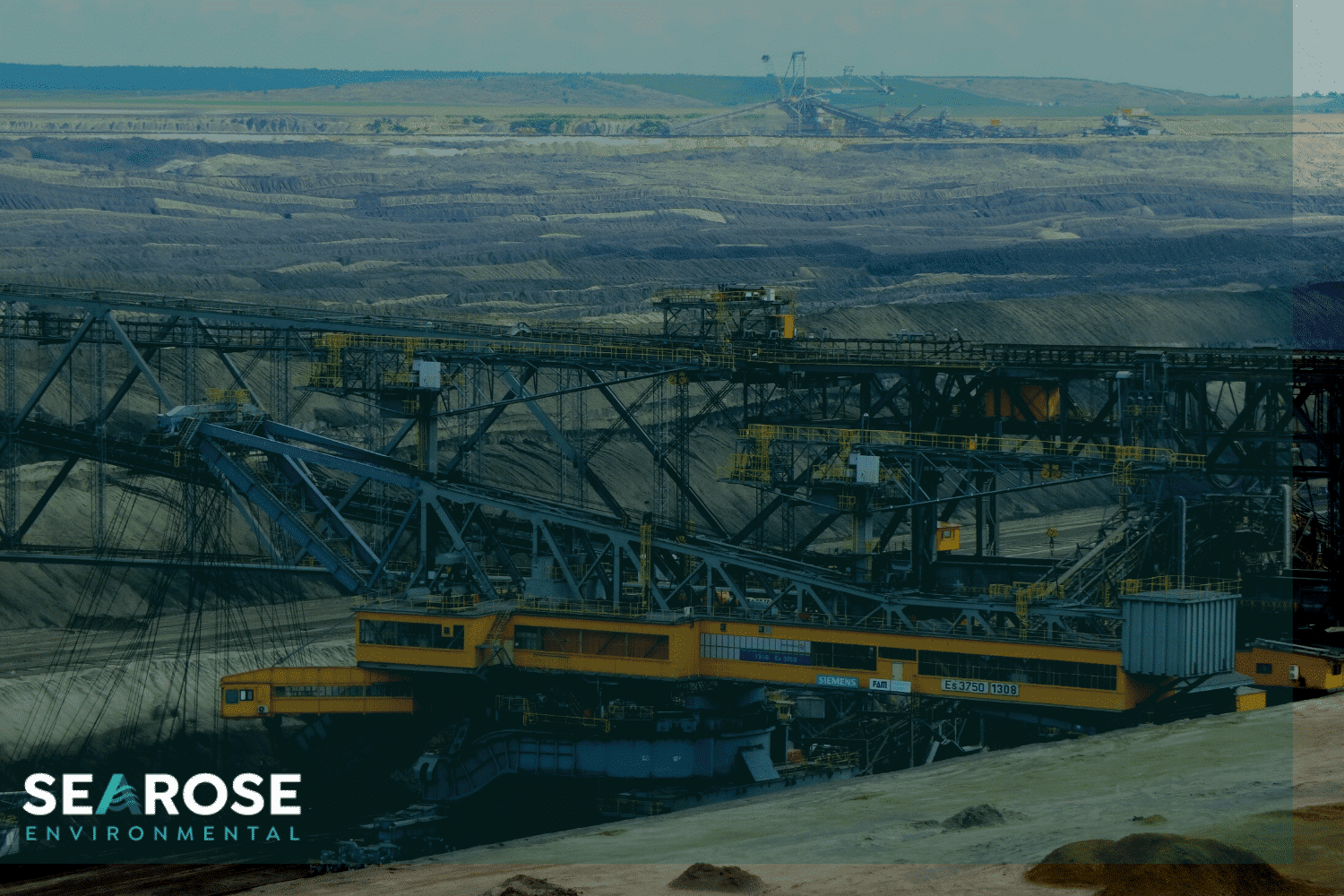A pneumatic conveying system is the most effective method of transporting and handling product material in a granular or powdered form. Most often seen consisting of a series of pipelines, pneumatic conveying is manipulating the movement of materials using a fusion of air flow and pressure.
But how does it work, and what types of use cases and industries can it be applied to? Our guide to pneumatic conveying will outline the key features of this system in the context of industrial use, as well as highlight the benefits it can offer.
How Does it Work?
Pneumatic conveying works through a series of pipelines that use air propulsion to push particles from one point to another. Using the flow of air or other gases, these loose materials are pulled or pushed in bulk through the conveying line by either pressure or vacuum-based force. This system of transporting goods works through a pressure differential between the beginning and end of the pipeline and is assisted by airflow that is generated by a fan or compressor.
As operators adjust the airflow within these enclosed pipes, they can control the direction, speed, and amount of material that is transferred. This allows normally difficult-to-contain and collected granular substances like flour or plastic pellets to be moved in large amounts at once.

The Different Types of Conveyors
There are two main phases of pneumatic conveying: the dilute phase, and the dense phase, each with its own areas of application.
Dilute Phase
Dilute-phase pneumatic conveyancing systems are used for materials with light bulk densities that are non-abrasive and not easily damaged. In this type of system, small particles can move at a high velocity without causing damage to the system or the product itself. Materials with light bulk densities can be transported through pipes with blowers that create a steady and powerful airstream. Additionally, non-abrasive materials such as flour benefit from this style of pneumatic conveying, moving with a gas velocity of approximately 17-18 metres per second.
Dense Phase
With dense phase pneumatic conveying is a relatively new technology and is used for abrasive, delicate or heavy bulk density materials such as sugar, plastic pellets, pet food and detergents. During the dense phase, the velocity within the pneumatic conveying system is a lot lower than within the dilute phase at around 8 metres per second. This is because the materials are heavier, and transporting heavy bulk density materials at a higher velocity could cause damage to the system and the product. Dense phase pneumatic conveying also has a shorter range for transportation compared to the dilute phase. Where the dilute phase can transport materials up to 200 metres, the dense phase can only travel up to 100 metres. Typical air movement devices found in a dense phase solution include liquid ring compressors.
What Are the Benefits of Using a Pneumatic Conveying System?
There are multiple benefits to using a pneumatic conveying system such as:
- Being able to cover long distances either horizontally or vertically through pipe extensions.
- Optimal space utilisation due to the possibility of pipes to be attached along the walls and ceiling, or even around existing equipment.
- Easier access for maintenance and repairs when necessary.
- Significantly reduced contamination risk from dust or other external materials due to being an enclosed system.
- A highly controlled atmosphere, which is especially ideal for pharmaceutical or food-related applications.
- The ability to configure multiple pick-up and discharge points.
- Fewer moving parts compared to other mechanical systems such as hydraulics, making it less prone to breakdowns and malfunctions.

Where is Pneumatic Conveying Used?
Pneumatic conveying has various applications in production and manufacturing settings, especially in the following industries:
Food
Pneumatic conveying systems used extensively in the food industry where a high standard of hygiene is required. Due to their flexibility in handling different types of ingredients while keeping contamination risks at a minimum, these systems are ideal for transporting granular ingredients like sugar, flour, spices, and even cereal.
Pharmaceutical
The pharmaceutical industry often has to manage small granules and powders that require the use of pneumatic conveying to be handled safely and hygienically.
Chemical
Pneumatic conveying systems help tackle the contamination and toxicity issues usually faced in the chemical industry. Loose chemical substances, especially in power form, are easily and safely transported within this system for filtering and packaging.
Agriculture
Products such as fertiliser, animal feed, and grain are often produced in huge amounts, which a pneumatic conveying system is perfectly equipped to handle, especially as part of a larger production line system.
Mining
In the mining industry, bulk materials can be transported with ease using pneumatic conveying, especially with sand or smaller gemstones that are difficult to deal with by hand.
Maintaining a Pneumatic Conveying System
Since pneumatic conveyors operate with fewer moving parts than most other mechanical systems, they are often less prone to damage and require little maintenance or upkeep to continue functioning well.
A routine and continuous maintenance schedule is the first step against preventing unwanted problems and ensuring optimal operation of pneumatic systems. At all times, the safety of workers is most important and should an issue arise within the system, action must be taken.
However, it is still possible for problems to arise when operating a pneumatic conveying system. Troubleshooting an enclosed system like pneumatic conveyors can be challenging due to the lack of visibility for the inside of the system. In such cases, it’s always better to consult a qualified technician to investigate the problem and perform repairs if necessary.
Here at Searose Environmental, we can work with you on the supply, design, installation, and maintenance of pneumatic conveying systems. Whether you require assistance regarding pneumatic problems and solutions or would like an immediate quote on your pneumatic conveying solutions and consulting services, do not hesitate to call. Get in touch with us today at 1300 48 48 49, and we’ll tell you everything you need to know about your new conveying system.
